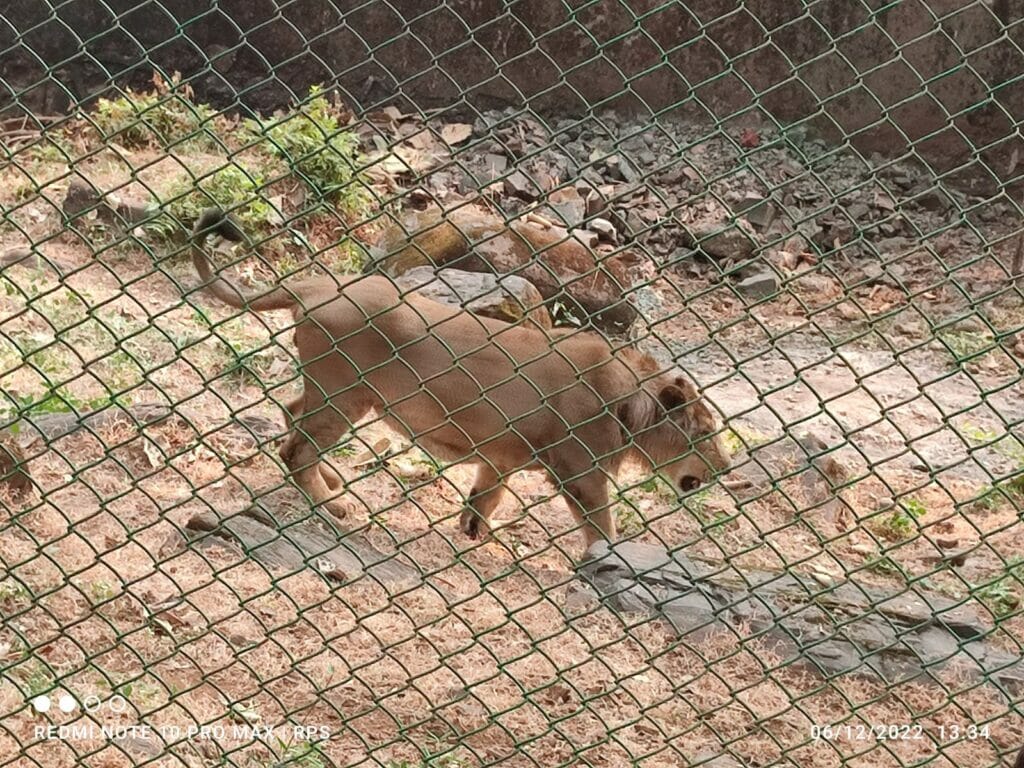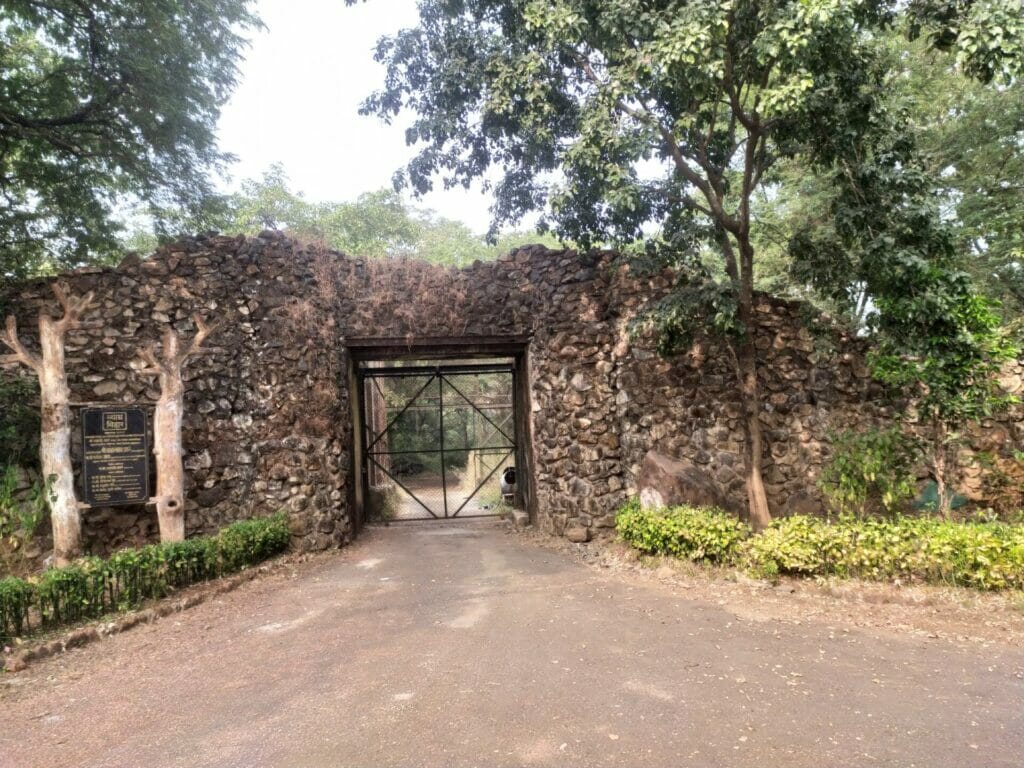The lion safari in Sanjay Gandhi National Park (SGNP) was always a major attraction since its inception in 1975. However, it was discontinued earlier this year due to old, ailing animals. Now, things are about to change. With the arrival of two lions from Gujarat, through an exchange programme, the safari is all set to reopen.
After the death of 17-year-old Ravindra on October 17th and of 12-year-old Jespa recently due to old age ailments, there were no lions left at SGNP. Jespa breathed his last on 27th November 2022 within two days after the arrival of the new pair of lions from Gujarat.
The pair of lions procured from the Sakkarbaug Zoological Garden (SZG), a nodal facility for lion breeding, referred to as D11 and D12, are two years old. Apart from being used for public viewing, they will also be used for captive breeding.
“Since the new pair of lions are young, we are hoping that they will have plenty of time to mature and breed. We should be able to have enough lions in time to come,” says G. Mallikarjun, the director of SGNP. The SGNP is also in the process of procuring another pair of lions from Gujarat soon.

Safari details
The original concept of the safari was to let the animals roam free within 20 hectares of safari enclosures and let visitors view them in their natural habitat, from within the confines of a bus. However, these animals were subsequently moved to smaller enclosures of around 10,000 sq ft due to renovation works. While the lions were shifted to secondary enclosures in 2017, the tigers were moved in 2018. Since then, safari visitors get to see the lions and tigers only in enclosures of the size of about an acre, from the bus.
The lion safari is expected to open to the public by December-end. From January 2023 onwards, adults will have to pay Rs 113 for lion/tiger safaris while children will be charged Rs 45. A combined lion and tiger safari would cost Rs 144 for adults and Rs 57 for children till the age of 12. The park entrance fee will also be increased to Rs 85 from January 1st as part of the annual hike.
Currently, the SGNP has four tigers (one male and three females) and has a capacity of eight tigers. Citizens can expect to see the tigers move around in their natural habitat within the renovated 20 hectare safari enclosures in the next three months. Viewing the lions in their natural safari could take longer though. With 19 leopards in its 24 enclosures, SGNP also plans to start a leopard safari in time to come, Mallikarjun informs.
Animal Exchange program
Mumbai’s SGNP got the two lions in exchange for two tigers that it has sent to the Sakkarbaug Zoological Garden (SZG). It was facilitated through the animal exchange program governed by the Central Zoo Authority (CZA) under the Wildlife Protection Act. “Under the animal exchange program, zoos can exchange, donate or gift animals between them depending on their needs after taking due permission from the CZA. The approval is granted subject to conditions about whether they have the requisite space, facilities, veterinary staff and support infrastructure to take care of animals and only if both states are willing,” explains Nitin Kakodkar, retired principal chief conservator of forests (wildlife).
Read more: Thinking of adopting a tiger or a lion? Here’s what you should know
The politics of animal exchange
Aware of its ageing animals, the SGNP had been scouting for animals for quite a few years but wasn’t successful due to various factors. The Asiatic breed of lions are extinct across the world and are currently found only in two places – Africa and in India, in the Gir forest, Gujarat.
Reports said the Gujarat government had not responded to requests for lions from SGNP earlier because they weren’t happy with the rusty spotted cats being offered in exchange in 2017. The SGNP also tried for lions from zoos in other states like Telangana in 2020, but even there things did not move. Negotiations between officials of the SZG and SGNP came to fruition and the proposal of exchanging tigers was officially put up in May, 2022.
“With the change in government in Maharashtra, the new state forest minister Sudhir Mungattiwar from the Bharatiya Janata Party (BJP) visited his counterpart in Gujarat and soon enough, the animal transfers were approved and lions received within a span of two months,” says Gopal Jhaveri, vice president of the Mumbai unit of Aam Aadmi Party (AAP), who had been volunteering with citizen initiatives of the SGNP. Better political relations may result in SGNP getting another pair of lions from Gujarat.
What are the challenges of animal exchange?
Maharashtra has plenty of captive tigers and Gujarat has excess lions, but an animal exchange between the two states is not as simple as it sounds. Most of the tigers kept in captivity in Maharashtra were caught either in human-animal conflicts or are proven man-eaters. Such captive tigers are not allowed for public display.
According to Kishore Rithe, member of governing council of Maharashtra Zoo Authority and Maharashtra Wildlife Board, “Conflict animals, man-eaters and handicapped animals are not allowed for public display and even if they are exchanged, they are meant to be kept within the enclosure but not for public viewing. Also, when putting up a proposal for animal exchange, the authority has to clearly express the purpose for which the animal is sought, be it for public display or for breeding and stick to that purpose.”
Read more: How Mumbaikars can coexist peacefully with ferocious spotted cats
Future challenges
The rich biodiversity of SGNP, worth Rs 15 lakh crore and pegged to supply ecosystem services worth Rs 63417 crores per year, faces challenges in the form of encroachments, inflow of private vehicles disturbing animals and even infrastructure projects like the 11.8 km underground Thane-Borivali connector tunnel threatening to eat into it.

“An average lifespan of a lion is about 12-15 years, during which they can breed only for about five years of their maturity. However, SGNP could not breed lions due to its inability to find a suitable mate from Gujarat or elsewhere. One only hopes that these new lions are provided with the right atmosphere and conditions to breed. Such animals get disturbed by visitors and the sound of vehicles and need to be provided solitude and serene surroundings for mating,” says Jhaveri. He says that the SGNP should view animals from the focal lens of conservation and not as a tourist attraction.